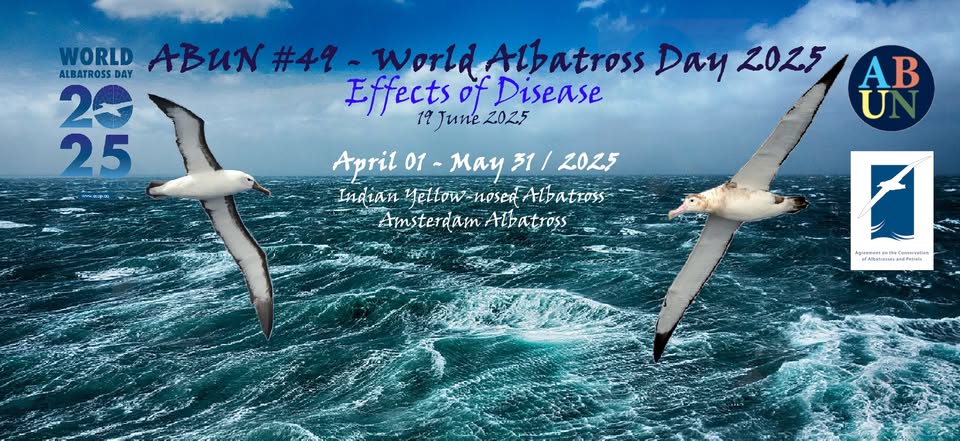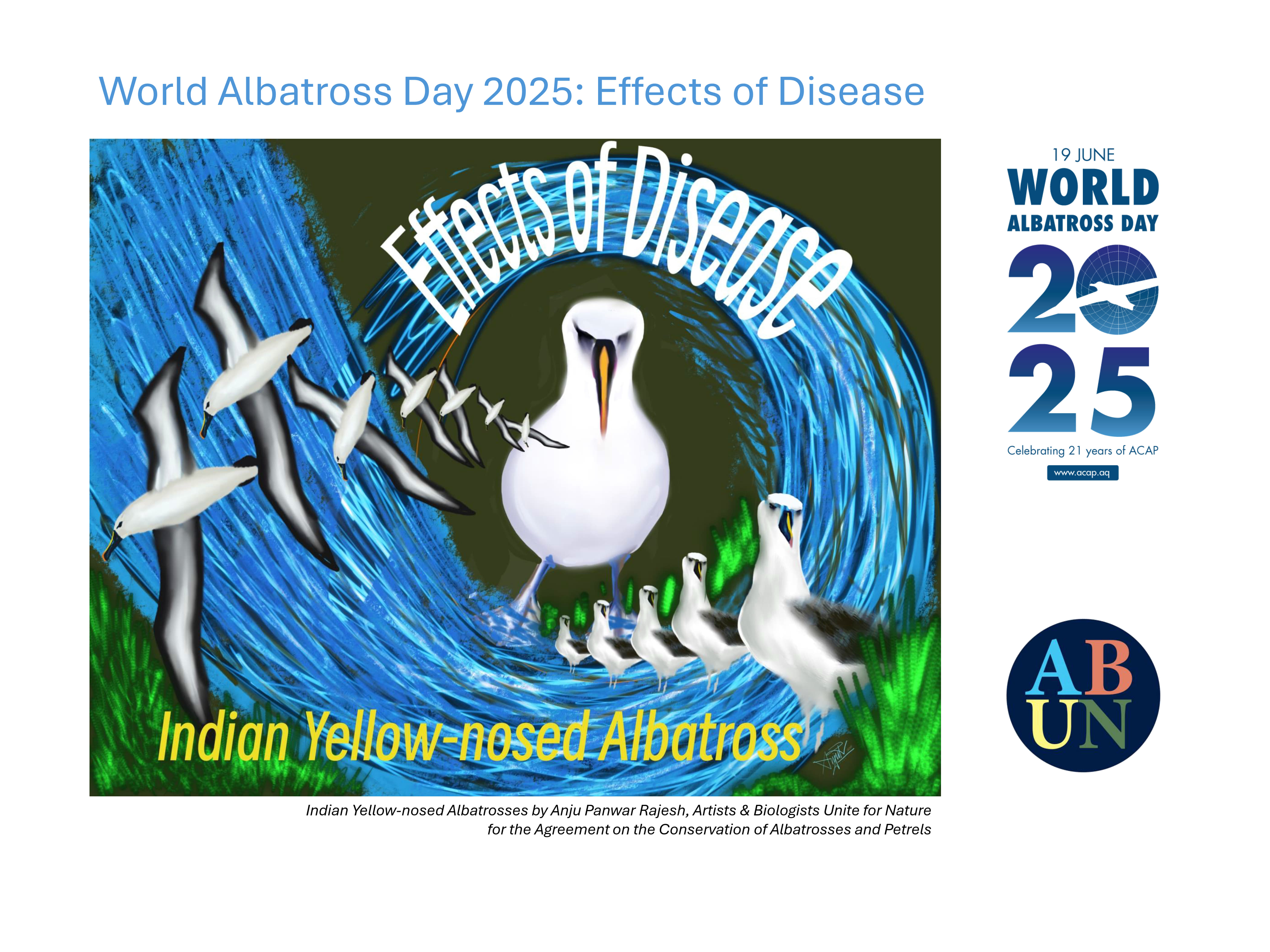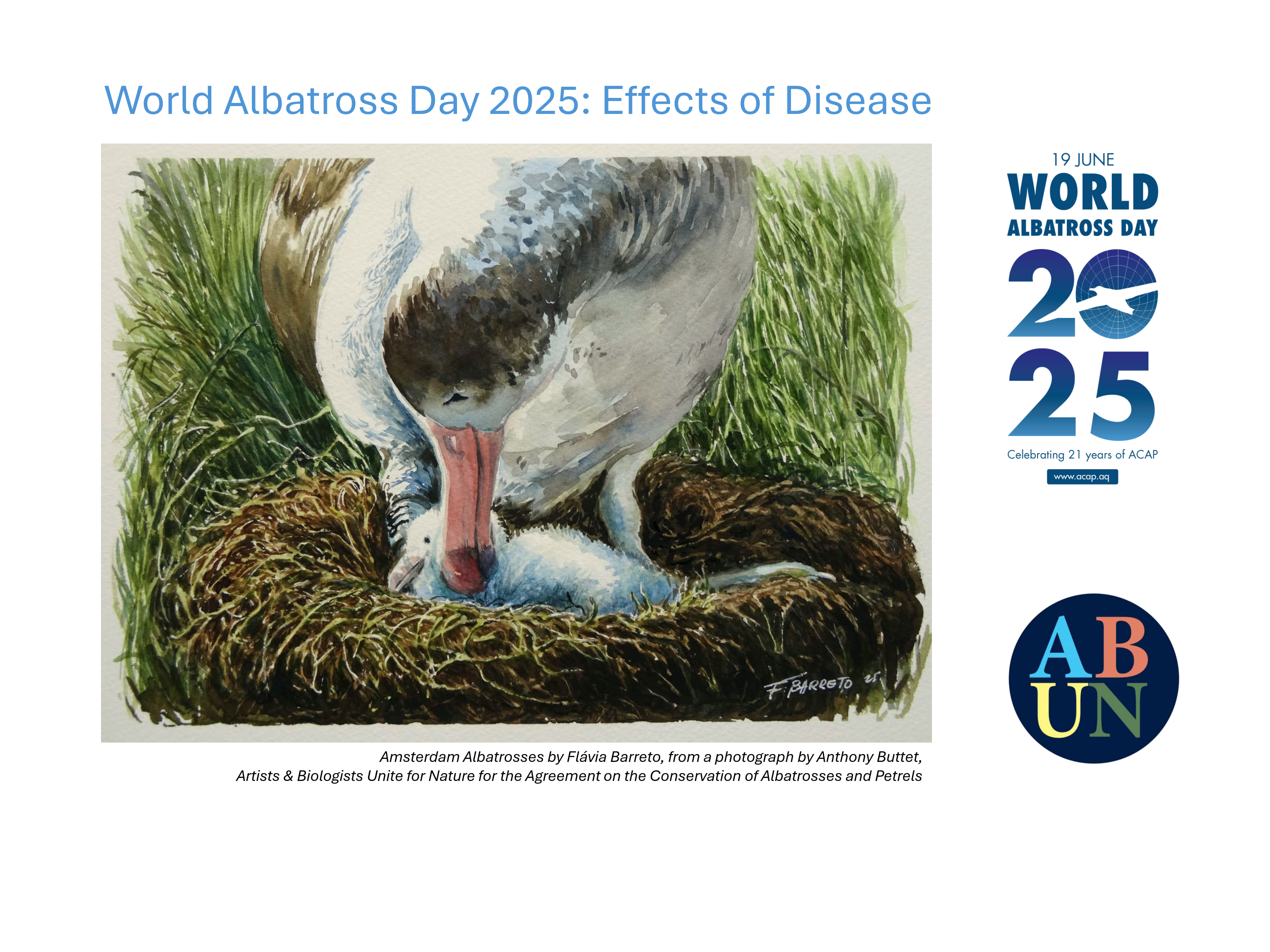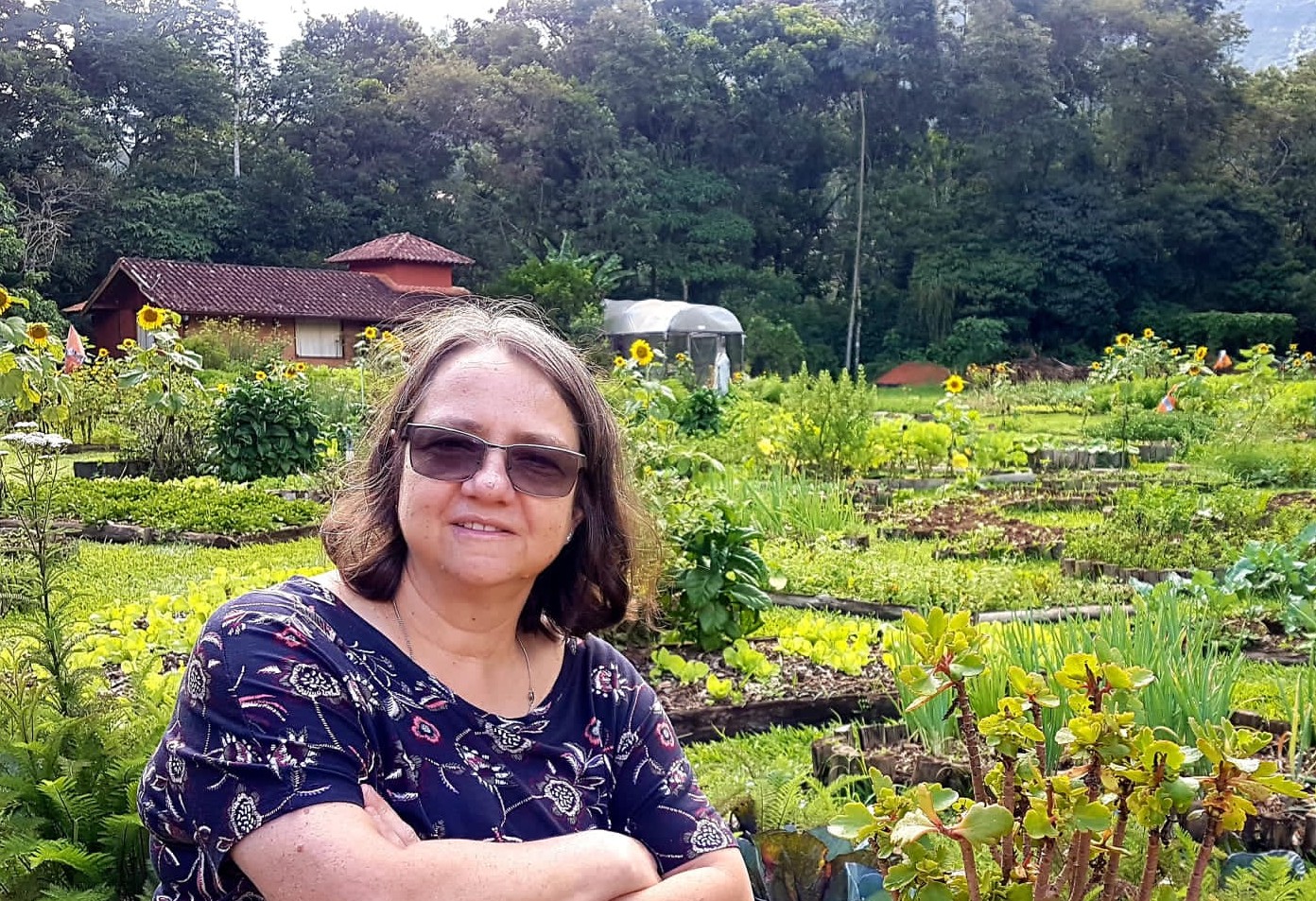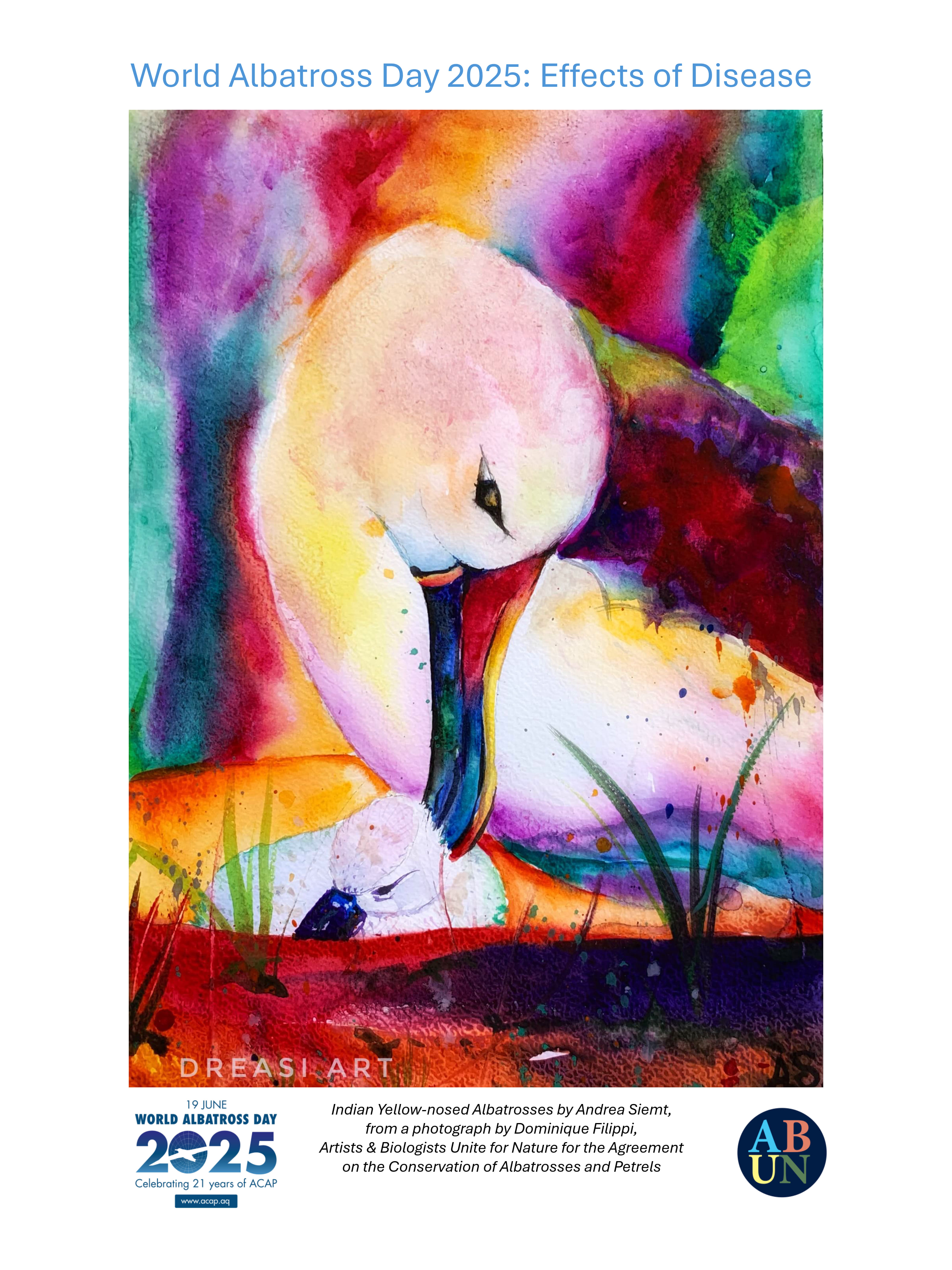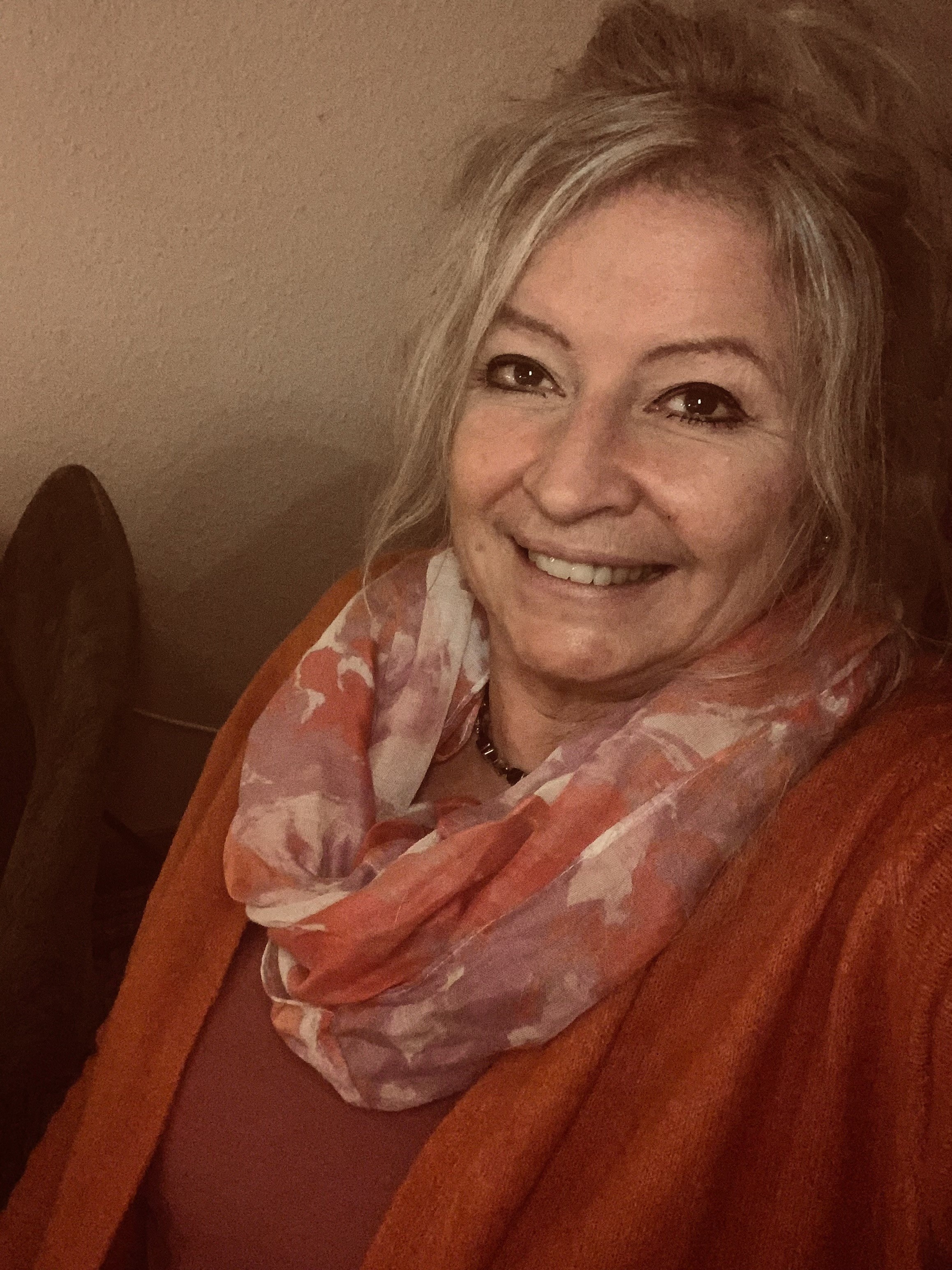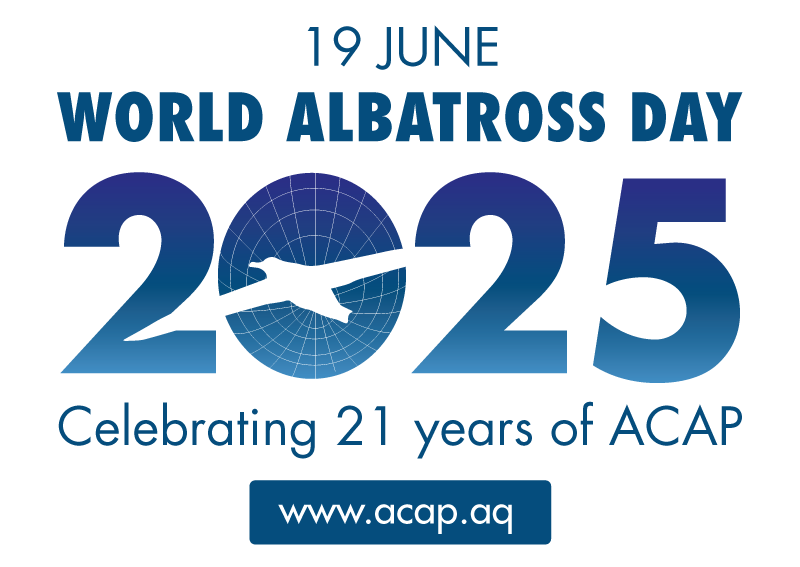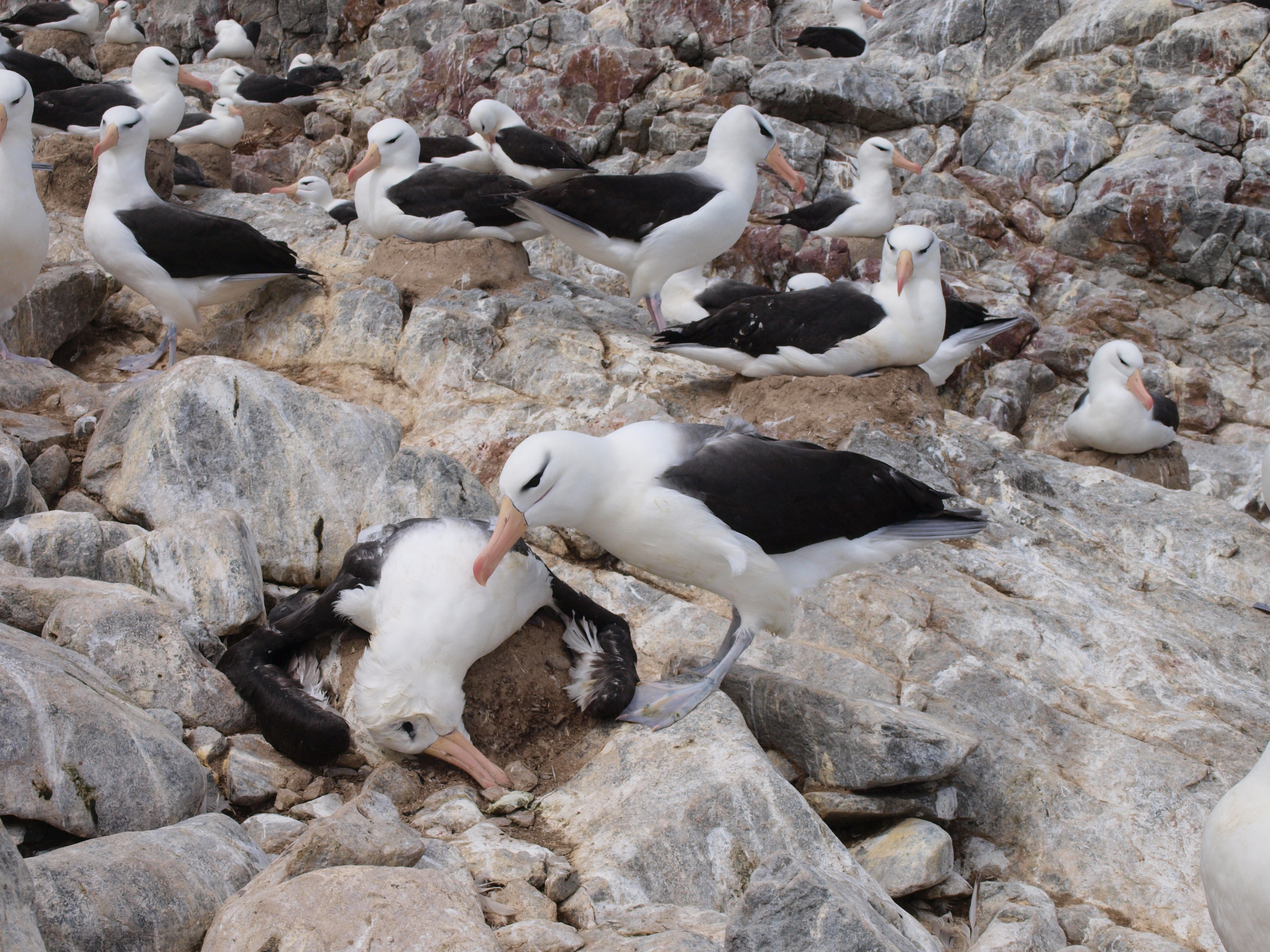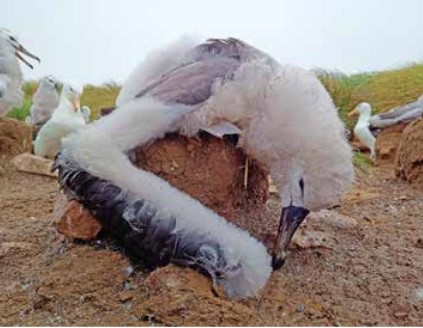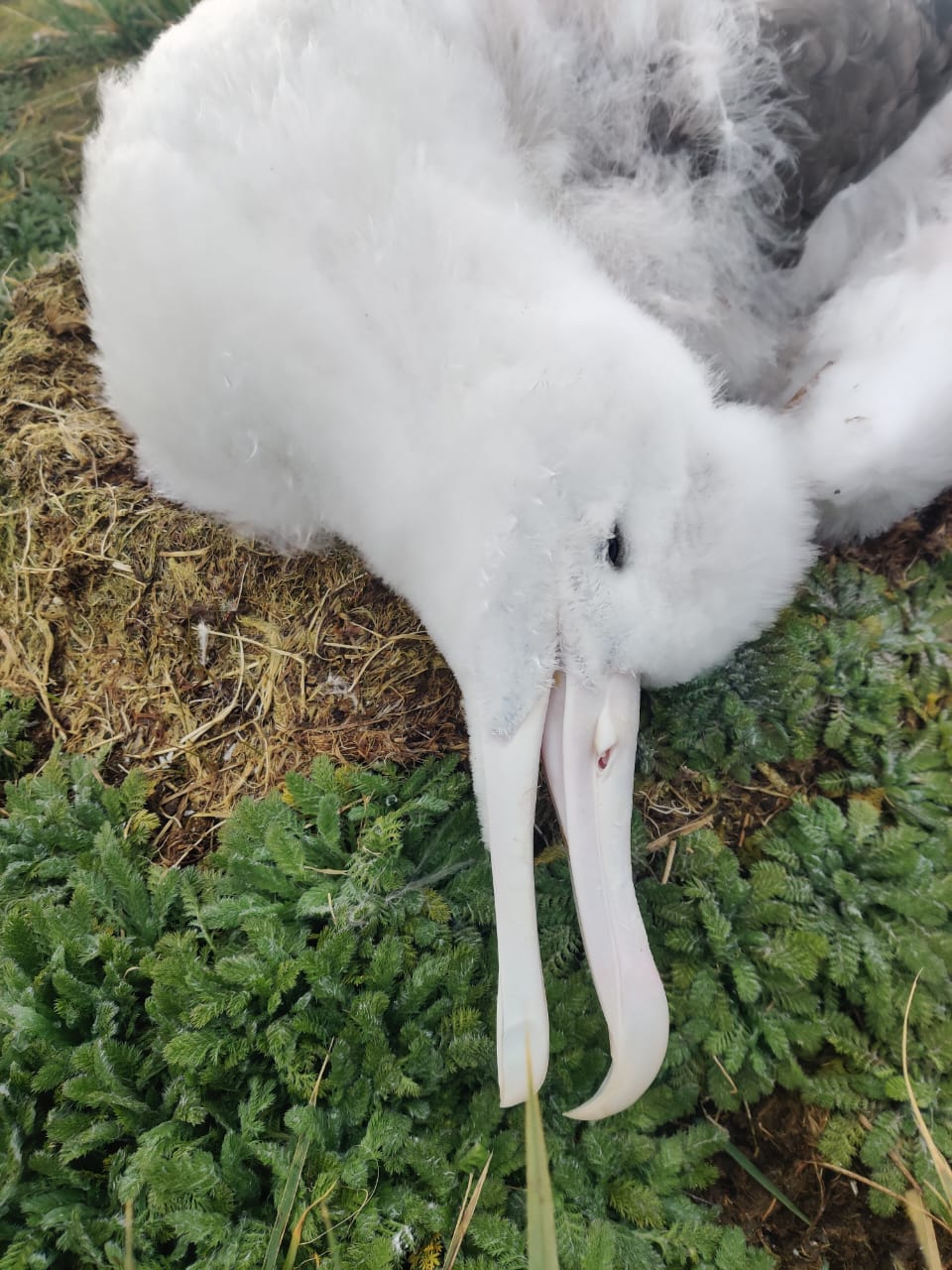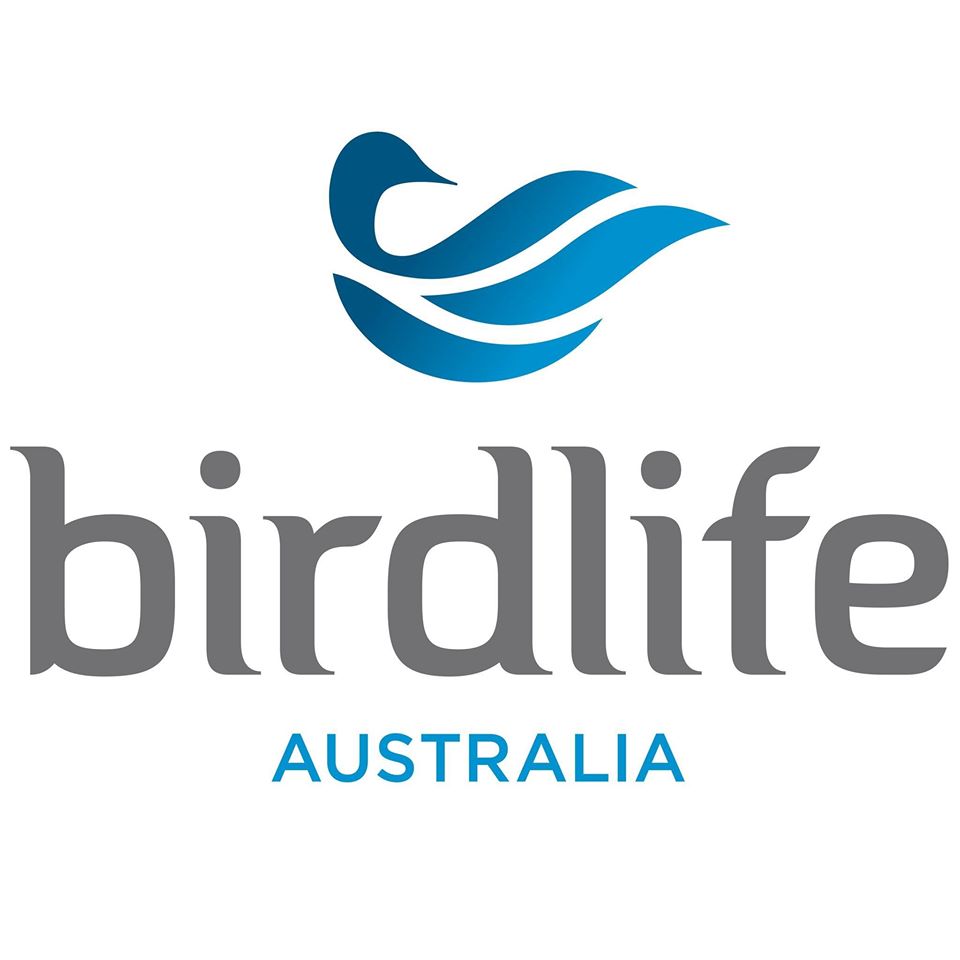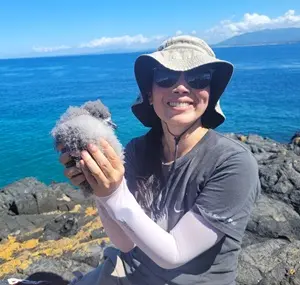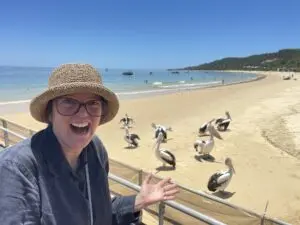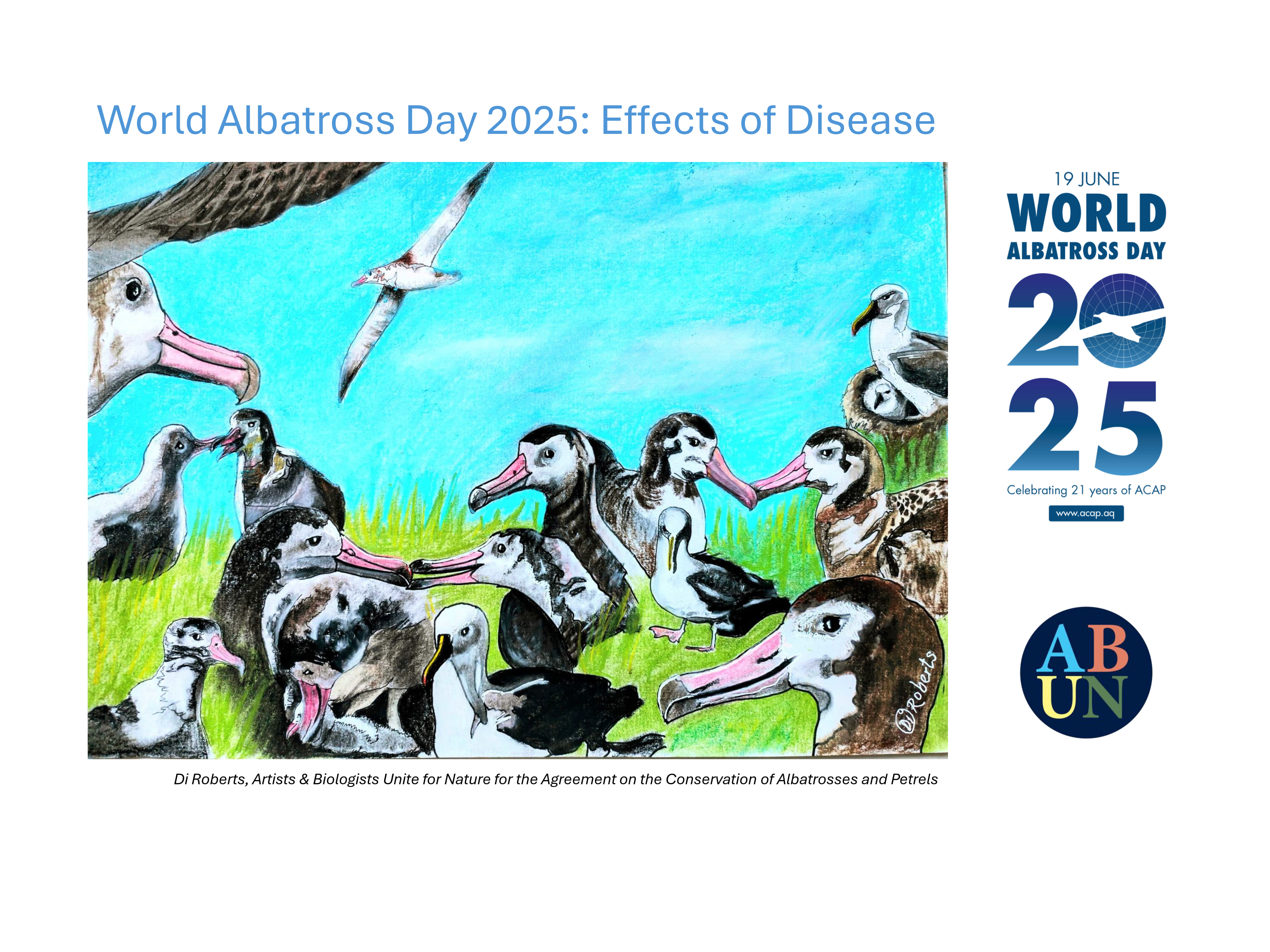
For the sixth year running, ACAP has collaborated with the international collective Artists and Biologists Unite for Nature (ABUN) to produce artworks depicting ACAP-listed albatrosses and petrels. This year the featured species are the Endangered Amsterdam Albatross Diomedea amsterdamensis, endemic to France’s Amsterdam Island, and the southern Indian Ocean’s Endangered Indian Yellow-nosed Albatross Thalassarche carteri in support of ACAP’s theme “Effects of Disease” for this year’s World Albatross Day on 19 June (WAD2025).
ABUN Project #49 ran from 01 April until 31 May, and following a grace period to allow for late submissions, resulted in 37 artworks by 25 artists becoming available for ACAP’s use in support of the conservation of albatrosses and petrels. Seven of the artworks have been chosen to illustrate WAD2025 posters, the first three of which were released yesterday, with three more today. The remaining art poster will be released tomorrow on World Albatross Day.
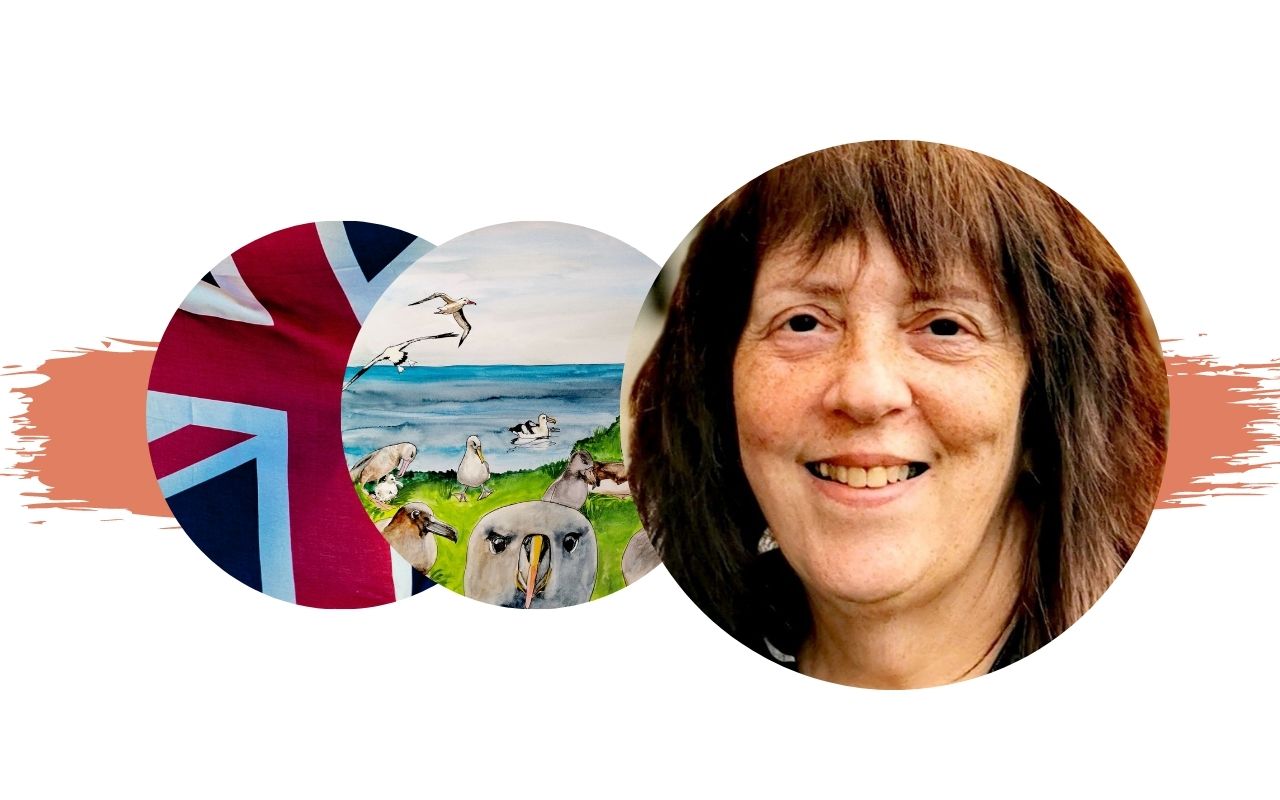 Di Roberts
Di Roberts
Di Roberts writes to ACAP Latest News: “I live in Bournemouth on the south coast of England in the county of Dorset. I am a retired art teacher but still teach community groups, mainly senior citizens, but also classes for disabled people. I specialise in pencil drawing but also love watercolour, pastels, ink drawing, and digital drawing on Procreate on my iPad. I take commissions, mainly portraiture, mainly in pencil.”
Di continues to say that she has been highly influenced by Kitty Harvill, Co-founder of ABUN, producing artwork for it since its inception. “I enjoy the idea that my art might effect change and greater respect for all creatures. I tend to put the focused animals into groups so that they never feel alone!” Her painting in pastels and pencil for WAD2025 depicts a clustered group of Amsterdam and Indian Yellow-nosed Albatrosses, both of which breed on France’s Amsterdam Island in the southern Indian Ocean.
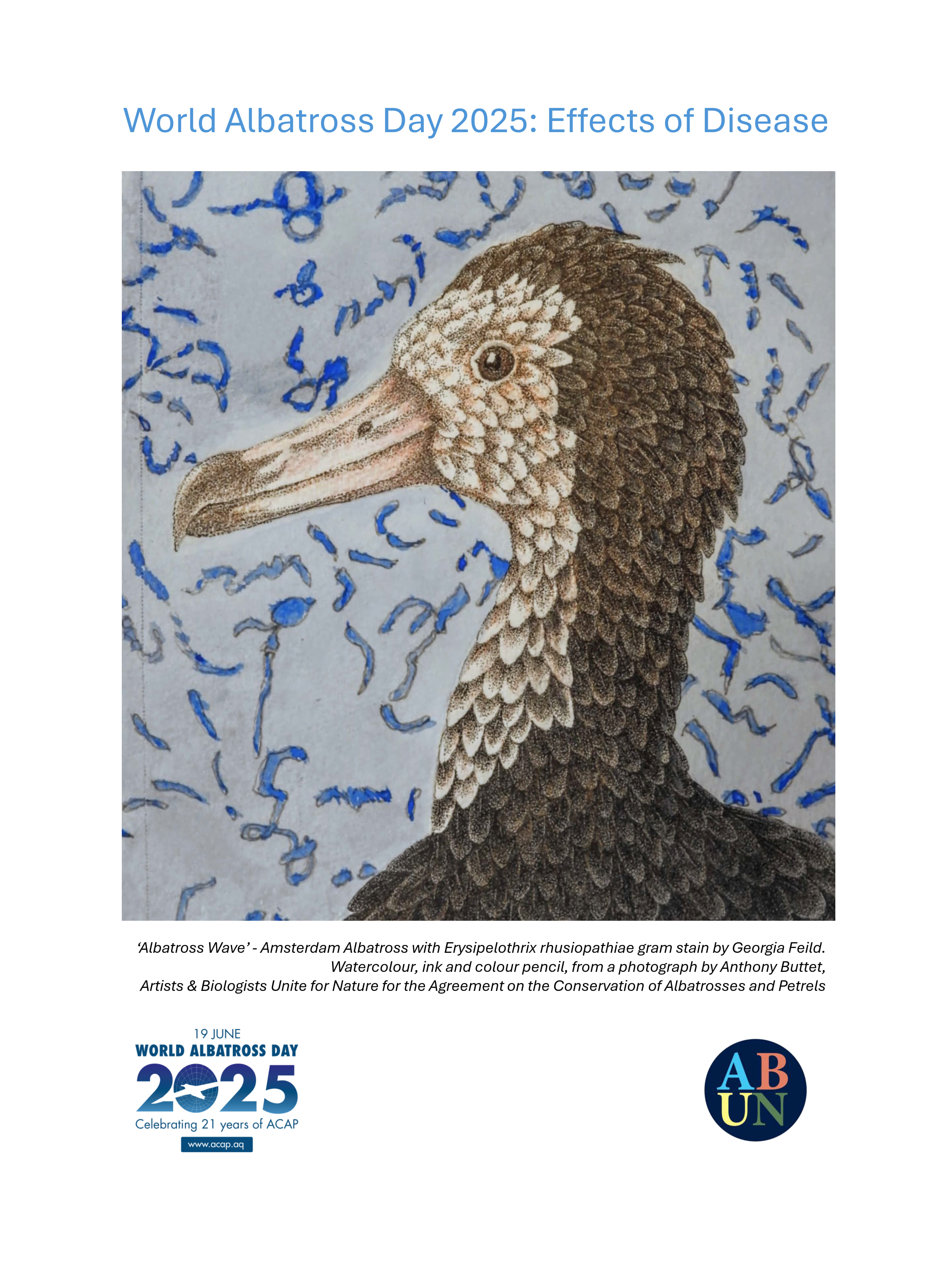
Georgia Feild writes that she is a retired mechanical/electrical systems design engineer who worked on control systems of power plants and aircraft for 40 years while pursuing a career in fine art. She has had artwork displayed in the USA and internationally, sold under commission and through her studio while teaching art courses to professional artists and college students in the evening and on weekends while carrying full-time employment.
After fulfilling her life goals in science and art she is now semi-retired, teaching STEAM (Science, Technology, Engineering, Arts, and Mathematics) classes part time at the Carnegie Museum of Natural History and sharing creative expression through visual art with disadvantaged children participating in the "Hearts on Fire" programme in Pittsburgh, Pennsylvania, USA. “I still exhibit artwork and participates in collaborative projects with ABUN, donating artwork in support of conservation efforts for many imperilled species.”
Georgia’s artwork, in watercolour, ink and coloured pencil, cleverly combines an Amsterdam Albatross with a background of Erysipelothrix rhusiopathiae bacteria which has been recorded on Amsterdam Island, placing its albatrosses at risk being infected with the disease erysipelas.
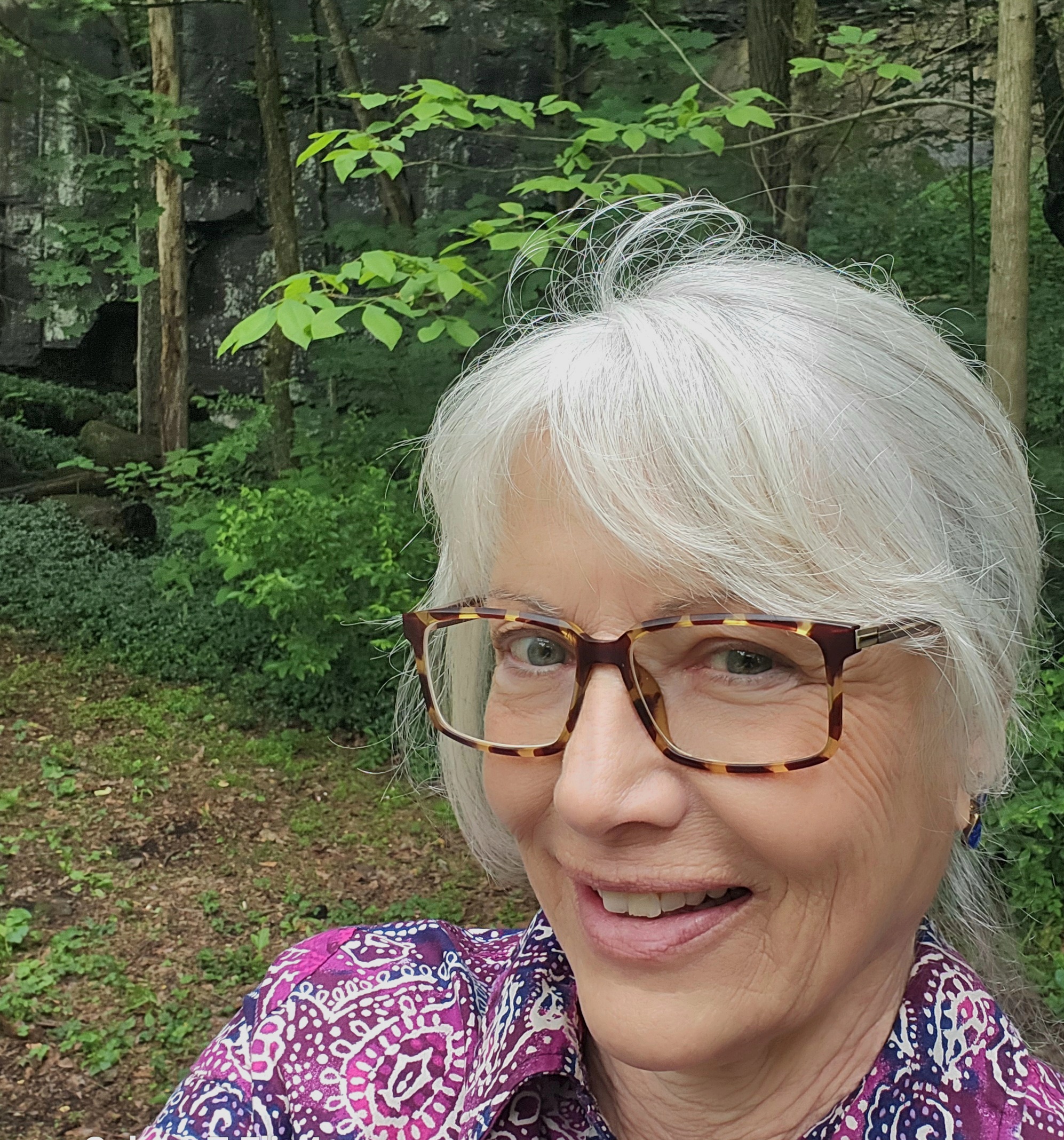 Georgia Feild
Georgia Feild
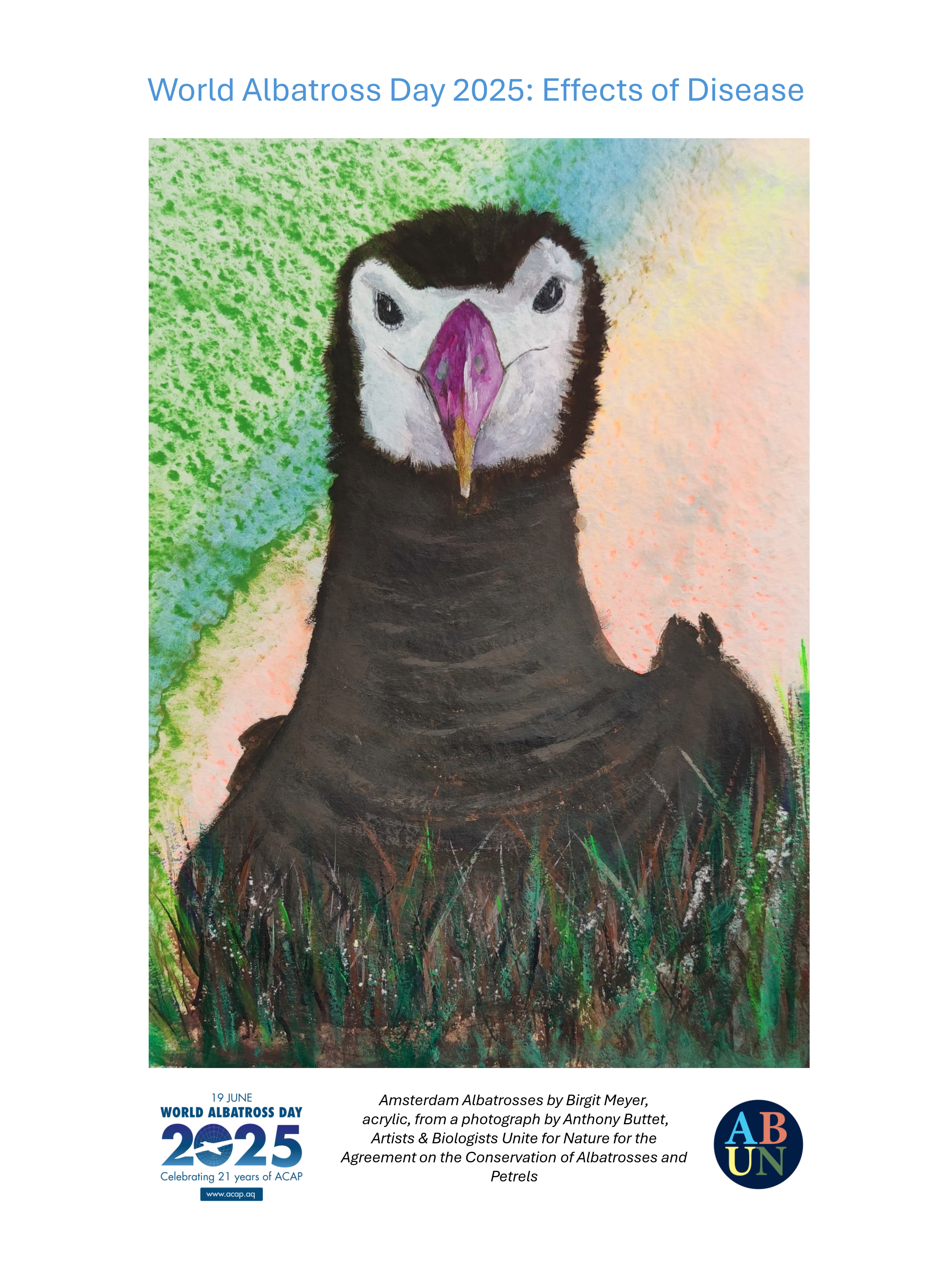
Birgit Meyer lives in Schwarzenbach am Wald in Bavaria, Germany. Her striking painting is of an Amsterdam Albatross "head on", inspired by a photograph taken by Anthony Buttet. Her artwork is in acrylics on Torchon, a type of watercolour paper known for its distinctive, rough and textured surface.
 Birgit Meyer
Birgit Meyer
All seven art posters marking WAD2025 will be available for downloading and display later this month.
With thanks to all the artists who contributed to ABUN Project #49, "Effects of Disease". Thanks also to Marion Schön of ABUN who motivated the project and also designed its banner artwork.
John Cooper, Emeritus Information Officer, Agreement on the Conservation of Albatrosses and Petrels, 18 June 2025

 English
English  Français
Français  Español
Español 